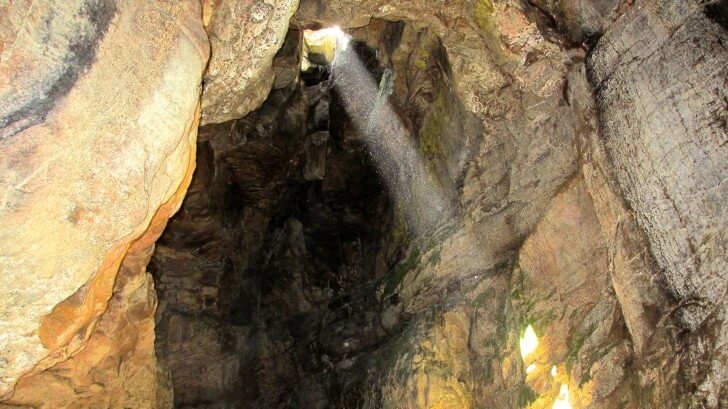
New Findings in Ukraine Show How Ice Age Humans Controlled Fire for Survival
In an impressive revelation, a group of global researchers has discovered significant proof of advanced fire-building methods employed by Ice Age hunter-gatherers in current-day Ukraine. These results, featured in Geoarchaeology, provide fresh insights into one of prehistory’s lingering enigmas: how did early humans withstand the harsh cold of the Last Glacial Maximum (LGM), the most severe phase of the last Ice Age? The clues, it appears, are hidden within ancient hearths located deep in the Dniester River valley.
Revealing Fire from 23,000 Years Ago
The study, spearheaded by scientists from the University of Algarve in Portugal and the University of Vienna in Austria, centered on the Korman’ 9 site in southwestern Ukraine. Here, archaeologists discovered and examined three ancient fireplaces that date back approximately 23,000 years—a period when much of Europe faced relentless cold, glaciers, and limited resources.
“We acknowledge that fire was prevalent before and after this era, but artifacts from the height of the Ice Age are exceedingly rare,” asserts William Murphree, a geoarchaeologist and lead author of the study. “The mere existence of these hearths is astonishing.”
What enhances the significance of the discovery is the thorough analysis conducted on these prehistoric hearths. Utilizing state-of-the-art geoarchaeological tools, including micromorphology—the microscopic study of soil and sediment—and colorimetric analysis, researchers reconstructed the methods used to build and maintain these ancient fires.
Managed Flames and Intelligent Fuel Selection
One of the most astonishing findings from the investigation is the intensity and complexity of these fires. The campsites’ flames burned at temperatures surpassing 600°C—adequate not only for warming individuals but also for processing materials like stone and bone, which were essential for crafting tools and weapons.
Challenging earlier beliefs that Ice Age humans possibly depended heavily on burning animal bones due to a shortage of plant-based fuel, the charcoal analysis from the study reveals a different narrative. “Our research indicates that spruce wood served as the primary fuel source,” articulates Philip R. Nigst, co-author and archaeologist at the University of Vienna. “This contradicts the long-standing perceptions of drastic fuel scarcity during this timeframe.”
While some animal bones uncovered at the site were charred, they seem to have been burned unintentionally rather than purposefully used as main fuel sources. “Some bones achieved temperatures above 650°C,” remarks Marjolein D. Bosch, a zooarchaeologist involved in the study. “We are still investigating whether that was accidental or deliberate.”
Basic Design, Sophisticated Application
Interestingly, the hearths themselves featured a relatively simple design—open fires lacking stone rings or elaborate structure. However, analyses reveal they were carefully managed and modified for various purposes, including cooking, warmth, tool-making, and possibly even social or ceremonial events.
“People skillfully controlled the fire and adjusted its use to meet their specific needs,” states Nigst. “Their adaptability is remarkably impressive. Furthermore, the evidence suggests these fires were utilized across different seasons, indicating repeated visits to the site and a well-established pattern of migration and settlement.”
What Became of Other Fires?
Despite the achievement in uncovering ancient fire usage, the general absence of hearths from the peak Ice Age period remains unexplained. Researchers hypothesize that many fire traces could have been erased over centuries by intense freeze-thaw cycles that expose and damage fragile archaeological layers. Alternatively, communities may have developed other strategies—such as portable heating methods, shelters insulated with animal skins, or communal warming techniques—to lessen dependence on open fires.
“There’s still a lot we don’t understand,” explains Murphree. “Did extreme conditions restrict fuel gathering? Or did individuals adapt with innovative techniques and cultural practices? These are intriguing questions we are now better equipped to investigate.”
Insights for Modern Issues
The significance of this research extends well beyond the excavation site. As modern societies face the ramifications of rapid climate change, the resilience and creativity exhibited by Ice Age humans provide a motivating perspective.
“They thrived in an environment that would be unimaginable today—with limited resources, minimal technology, and harsh weather extremes,” states Bosch. “Their ability to control fire, adapt their behaviors, and work together as a community was vital. There’s a profound lesson in that for our own times.”
The hearths at Korman’ 9 illuminate a vital chapter in human history, showcasing the resourcefulness and ingenuity of our Ice Age ancestors. Through fire, they not only survived the cold but also paved the way for thousands of generations to follow.
As research progresses, sites like Korman’ 9 may yield further insights into the ingenuity that has enabled humanity to flourish in even the most unforgiving environments—an endurance that remains pertinent in today’s evolving world.